the past days I tried to plot a matrix into a polar 2D heatmap. The matrix consists of 80x720 data points. To specify the whole thing a bit more. It is data from a XRD in polar coordinates (a pole figure). The columns are the angular the sample was rotated around between 0° and 360° in steps of 0.5° (lets call it phi), the rows are another angular the sample was tilted by between 35° and 75° in 0.5° steps (lets call this one psi). The value on a specific position in the matrix is the intensity from the detector at these angulars. I want to end up with a polar plot where the radius is psi, the angular is phi and z or more precise the color represents the intensity.
I already found this nicely discussed question but could not apply it to my problem. I managed to plot the whole thing with splot -file- matrix u ($2/2):($1/2):3 using a pm3d map but thats obviously not polar.
Does anyone here has an idea how to plot the matrix in polar form? Thanks very much! Any advice about what direction to take would be very much appreciated
(I also have 80 individual data files of this measurement with the psi angular (0°-360°) and the corresponding intensity which didn't help me much so far).
cheers Flo
